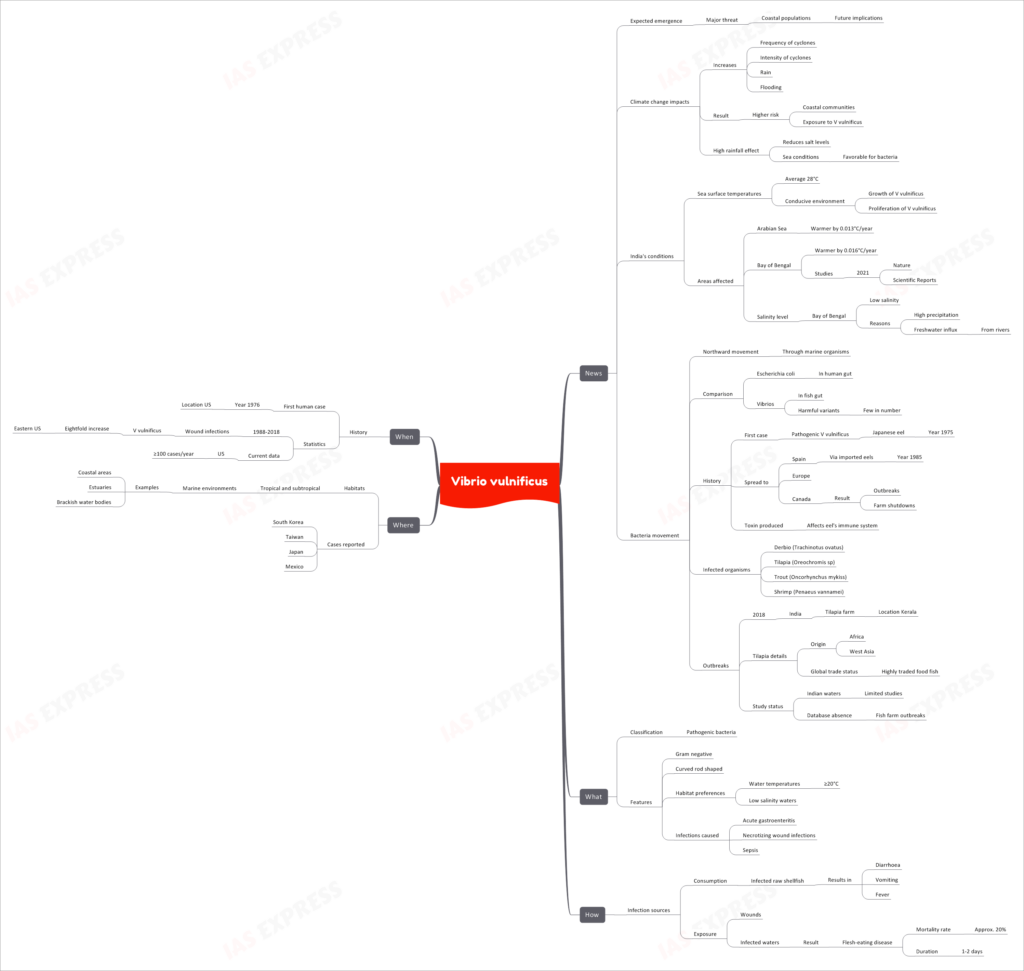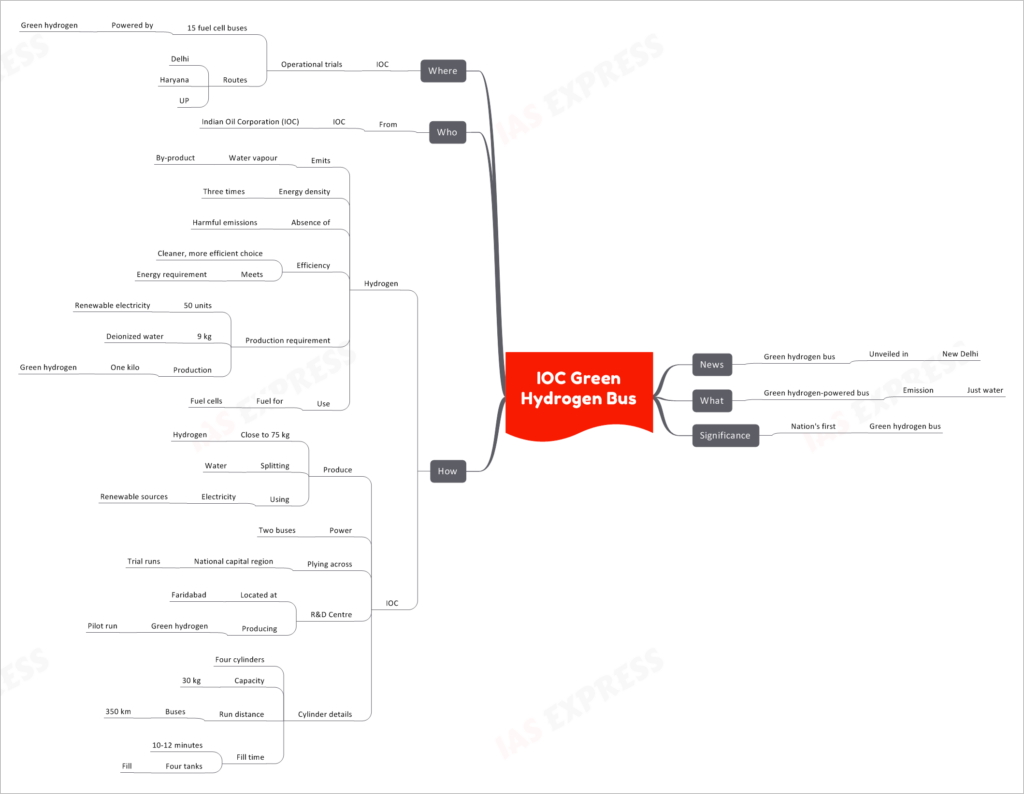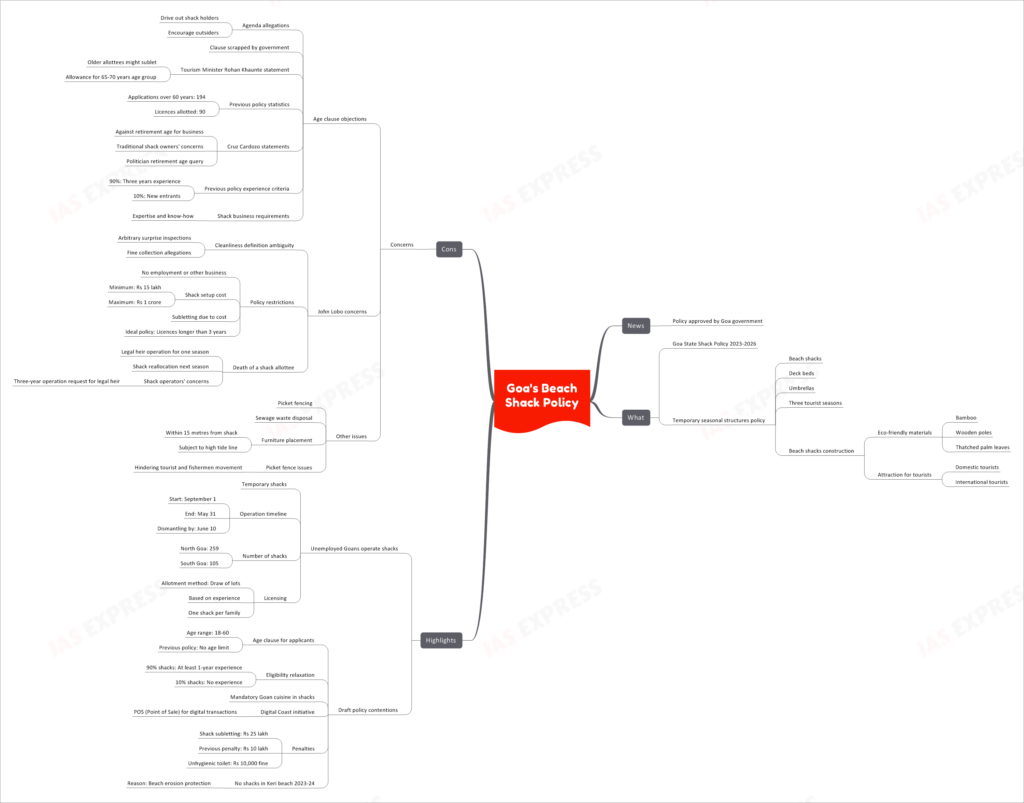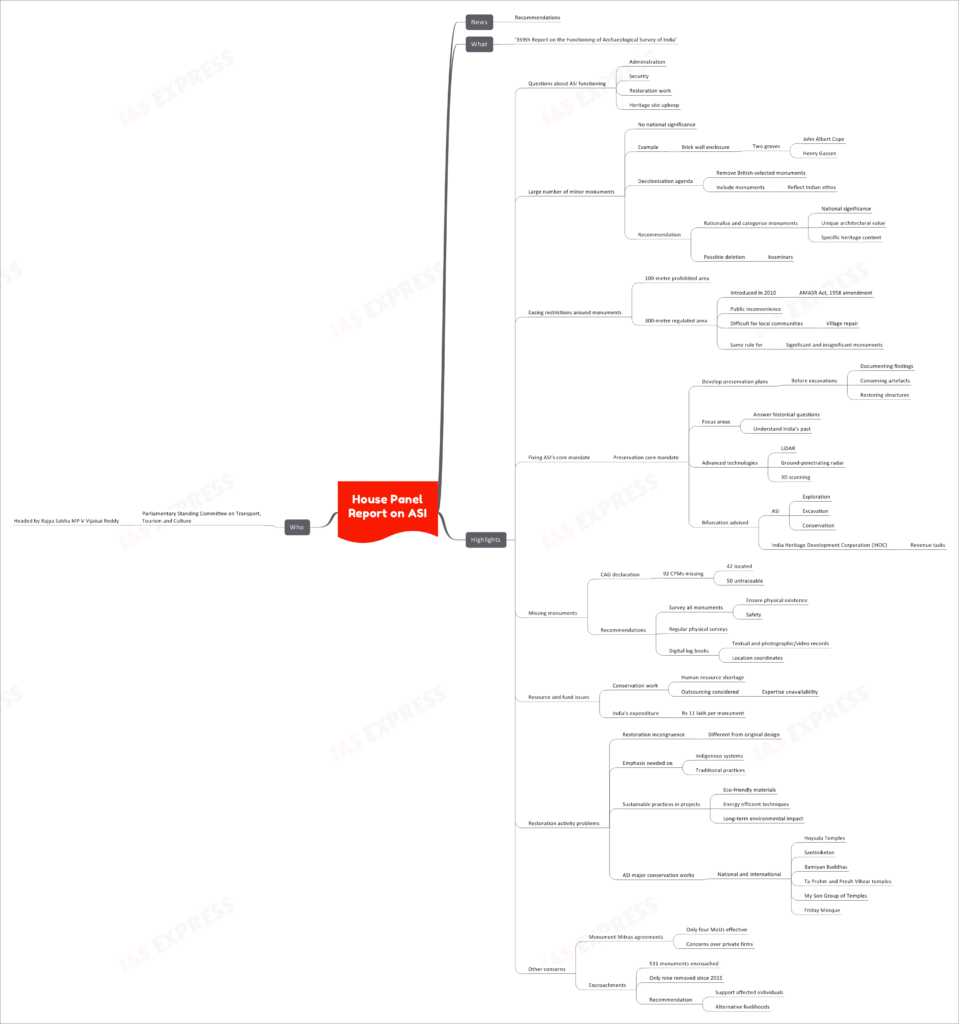[Newsbits] 25.09.2023

Vibrio vulnificus
Recent news highlights the expected emergence of Vibrio vulnificus, a pathogenic bacteria posing a major threat to coastal populations. This article explores the various aspects of V. vulnificus, including its impact on coastal communities, the role of climate change, conditions in India, bacterial movement, classification, features, infection sources, habitats, reported cases, and historical context.
Expected Emergence: A Major Threat to Coastal Populations
- Coastal Communities at Risk: V. vulnificus poses a significant threat to coastal populations worldwide.
- Future Implications: The emergence of this pathogen could have far-reaching consequences for public health and the environment.
Climate Change Impacts
- Increases in Frequency and Intensity of Cyclones: Climate change has led to a rise in the frequency and intensity of cyclones, affecting coastal regions.
- Increased Rainfall and Flooding: Rising temperatures have resulted in increased rainfall and flooding, further exacerbating the risk.
- Higher Risk for Coastal Communities: The combination of these factors increases the risk of exposure to V. vulnificus.
- High Rainfall Effect: Increased rainfall reduces salt levels in the sea, creating favorable conditions for the bacteria.
India's Conditions
- Sea Surface Temperatures: India's sea surface temperatures, averaging 28°C, provide a conducive environment for the growth and proliferation of V. vulnificus.
- Affected Areas: The Arabian Sea and Bay of Bengal are particularly affected, with temperatures warming by 0.013°C/year and 0.016°C/year, respectively.
- Salinity Level in Bay of Bengal: Low salinity levels in the Bay of Bengal are due to high precipitation and freshwater influx from rivers.
Bacteria Movement
- Northward Movement: V. vulnificus can move northward through marine organisms.
- Comparison to Escherichia coli: Unlike Escherichia coli, which is found in the human gut, Vibrios are primarily present in fish gut, with only a few harmful variants.
- Historical Spread: The first documented case of pathogenic V. vulnificus occurred in a Japanese eel in 1975 and subsequently spread to Spain, Europe, and Canada, causing outbreaks and farm shutdowns.
- Toxin Production: V. vulnificus produces toxins that affect the immune system of infected organisms.
Infected Organisms and Outbreaks
- Variety of Hosts: V. vulnificus can infect various organisms, including Derbio, Tilapia, Trout, and Shrimp.
- 2018 Outbreak in India: A significant outbreak occurred in a Tilapia farm in Kerala, India.
- Global Trade Status of Tilapia: Tilapia, originating from Africa and West Asia, is highly traded as a food fish.
- Limited Studies: There is a lack of comprehensive studies on V. vulnificus in Indian waters, and a database on fish farm outbreaks is also absent.
What is Vibrio vulnificus?
Classification
- Pathogenic Bacteria: V. vulnificus is a pathogenic bacterium with harmful effects on humans.
Features
- Gram Negative: This bacterium is classified as Gram-negative.
- Curved Rod Shaped: It has a distinctive curved rod-shaped morphology.
- Habitat Preferences: V. vulnificus thrives in water temperatures of at least 20°C and low salinity waters.
Infections Caused
- Acute Gastroenteritis: V. vulnificus can cause acute gastroenteritis in humans.
- Necrotizing Wound Infections: It is also known for causing necrotizing wound infections.
- Sepsis: In severe cases, V. vulnificus can lead to sepsis.
How Does V. vulnificus Infect?
Infection Sources
- Consumption: Ingesting infected raw shellfish can result in symptoms like diarrhea, vomiting, and fever.
- Exposure: Wounds exposed to infected waters can lead to flesh-eating diseases with a mortality rate of approximately 20%, often lasting 1-2 days.
Where is V. vulnificus Found?
Habitats
- V. vulnificus is commonly found in tropical and subtropical marine environments, including coastal areas, estuaries, and brackish water bodies.
Reported Cases
- Cases of V. vulnificus infections have been reported in South Korea, Taiwan, Japan, Mexico, and the United States.
When Did V. vulnificus First Emerge?
Historical Context
- The first human case of V. vulnificus infection was reported in the United States in 1976.
- Between 1988 and 2018, wound infections caused by V. vulnificus saw an eightfold increase in the eastern United States.
- Current data suggests that the U.S. experiences over 100 cases of V. vulnificus infection each year.
IOC Green Hydrogen Bus
In a significant step towards a sustainable future, Indian Oil Corporation (IOC) has unveiled the nation's first green hydrogen-powered bus in New Delhi. This groundbreaking development represents a major leap in the adoption of clean energy solutions and underscores the importance of green hydrogen as an environmentally friendly fuel source.
The Green Hydrogen Bus: A Clean Mobility Solution
What is it? The green hydrogen bus is a remarkable innovation powered by green hydrogen. Unlike traditional fossil fuels, this bus emits only water vapor as its by-product, making it an eco-friendly and sustainable mode of transportation.
Significance: The introduction of India's first green hydrogen bus is a significant achievement in the country's pursuit of cleaner and more sustainable mobility options. It exemplifies a commitment to reducing harmful emissions and promoting environmentally responsible transportation.
How Does It Work?
Hydrogen and Emissions: Hydrogen, the fuel used in this bus, emits water vapor as its primary by-product when consumed in a fuel cell. This is a stark contrast to conventional fossil fuels that release harmful pollutants and greenhouse gases.
Energy Density: Green hydrogen boasts an impressive energy density, which is approximately three times higher than conventional fuels. This makes it an efficient and powerful source of energy for various applications.
Efficiency: Green hydrogen is not only cleaner but also more efficient. It meets the energy requirements of the bus while maintaining its environmental friendliness.
Production: The production of green hydrogen requires two key ingredients: renewable electricity and deionized water. Approximately 50 units of renewable electricity and 9 kg of deionized water are needed to produce one kilogram of green hydrogen.
Usage: Green hydrogen is used as fuel for fuel cells, which generate electricity by combining hydrogen with oxygen from the air. This electricity powers the bus, providing a clean and efficient mode of transportation.
IOC's Role: Indian Oil Corporation (IOC) plays a crucial role in this endeavor. IOC produces close to 75 kg of hydrogen by splitting water using electricity from renewable sources. This hydrogen powers two buses currently undergoing trial runs in the National Capital Region.
R&D Centre: IOC's Research and Development Centre, located in Faridabad, is at the forefront of producing green hydrogen, with a successful pilot run showcasing the feasibility and potential of this eco-friendly fuel source.
Cylinder Details: Each green hydrogen bus is equipped with four cylinders with a total capacity of 30 kg. This enables the buses to cover a distance of up to 350 kilometers on a single fill, with a filling time of just 10-12 minutes using four tanks.
Implementation by IOC
Operational Trials: IOC has initiated operational trials with 15 fuel cell buses powered by green hydrogen. These buses are currently operating on various routes across Delhi, Haryana, and Uttar Pradesh.
Prison Deaths in India
The issue of prison deaths in India has been a matter of grave concern, and recent revelations shed light on the alarming statistics and causes behind these fatalities. The Supreme Court Committee on Prison Reforms has highlighted the rising trend of custodial deaths and suicides within the prison system, prompting calls for immediate action and reform.
Understanding the Situation
Suicide: A Leading Cause of 'Unnatural Deaths'
- Suicide is identified as the leading cause of 'unnatural deaths' within Indian prisons, with Uttar Pradesh recording the highest number of suicides between 2017 and 2021.
Rise in Custodial Deaths
- Custodial deaths have been on a steady rise since 2019, with 2021 marking the highest number of such deaths.
'Unnatural' Deaths Causes
- 'Unnatural' deaths in prisons encompass various causes, including murders by inmates, deaths due to negligence or excesses, and accidental deaths. These occurrences raise significant concerns about the safety and security of inmates.
'Natural' Deaths
- In 2021, 90% of the 2,116 prisoners who died in judicial custody were attributed to 'natural' causes. These include aging and illnesses, with diseases like heart conditions, HIV, tuberculosis, and cancer being common contributors.
The Reporting and Investigation Process
Death Investigations
- The National Crime Records Bureau (NCRB) has laid down specific requirements for reporting custodial deaths. These include the obligation to intimate a custodial death within 24 hours and providing post-mortem reports, magisterial inquest reports, and videography reports.
Enquiry by Commission
- In cases where an enquiry by the Commission discloses negligence by a public servant, recommendations may include paying compensation to the Next of Kin (NoK), initiating disciplinary proceedings, and prosecuting the erring public servant.
Custodial Rape and Death
- The Code of Criminal Procedure mandates a judicial magisterial inquiry in cases of custodial rape and death.
National Human Rights Commission (NHRC) Statement
- The NHRC, in its 2010 statement, clarified that a judicial magistrate inquiry is "not mandatory" in all custodial death cases.
The Need for Reform
Government's Actions
- Various measures have been proposed to address the issues surrounding prison deaths, including Supreme Court judgments emphasizing prisoners' health and the Model Prison Manual of 2016, which outlines inmates' rights to healthcare and mental health services.
- However, rising suicide cases have prompted advisories, such as the NHRC's June advisory that attributes suicides to medical and mental health issues.
- The Supreme Court Committee on Prison Reforms has also put forth recommendations to address infrastructural issues, including the need to increase staff quantity and quality and improve communication for inmates.
Facts and Concerns
- Justice M.B. Lokur has highlighted the ambiguity in distinguishing between natural and unnatural deaths.
- Prison deaths are often under-reported, with the majority classified as natural. This under-reporting and rare investigation raise questions about the accuracy of the recorded causes.
- The COVID-19 pandemic further exacerbated the situation, with overcrowded prisons and inadequate medical staff contributing to the classification of COVID-19 deaths as natural.
- Justice Lokur, in previous judgments, has pointed out the issues of congested prisons, limited medical access for inmates, inadequate staff, and the lack of proper training for staff.
Expenditure on Medical Facilities
- Alarmingly, only 5% of the total expenditure is allocated to medical facilities in prisons, resulting in underutilized funds between 2016 and 2021. This reflects infrastructural deficiencies that contribute to neglecting the health of inmates.
- Scholar Meenakshi D’Cruz argues that 'unnatural' deaths are often due to neglect and the refusal to provide care, leading to such deaths being ascribed to natural causes.
- The case of Pratap Kute in 2012, arrested for rioting and house trespassing, exemplifies this issue, with an ambiguous cause of death. The Bombay High Court's 2023 statement exposed the callousness and insensitivity of authorities.
Recognition of the Cook Islands and Niue
In a significant announcement, US President Joe Biden has declared the recognition of the independence of two small Pacific nations, the Cook Islands and Niue. This recognition marks a strategic move by the United States to strengthen relationships in the Indo-Pacific region and counter the rising influence of China.
The Cook Islands
Description: The Cook Islands are a small Pacific nation located in the South Pacific Ocean. They are a self-governing island country that maintains a unique relationship with New Zealand.
Relationship with New Zealand: The Cook Islands are in free association with New Zealand, which means they receive aid and defense support from New Zealand. Cook Islanders possess New Zealand citizenship, making travel and work between the two nations seamless. The Cook Islands were named after Captain James Cook, who explored the region in 1773.
History: Once autonomous and home to tribes with mixed Polynesian ancestry, the Cook Islands now manage their own foreign and defense policies, although they rely on New Zealand for defense. Most Cook Islanders are New Zealand citizens but possess the status of Cook Islands nationals, exclusive to the islanders.
Population: As per the last census, the Cook Islands have a total population of 14,987, with the majority residing in Rarotonga, which has an international airport.
Leadership: The current leader of the Cook Islands is Prime Minister Mark Brown, who assumed office in October 2020, succeeding Henry Puna.
Niue
Description: Niue is another small Pacific nation, an island country located in the South Pacific Ocean. Like the Cook Islands, Niue is also in free association with New Zealand.
Relationship with New Zealand: All Niueans are New Zealand citizens, and the island nation depends on New Zealand as its main source of aid and its largest trading partner.
Status: Niue is not a member of the United Nations but holds a unique status equivalent to independence in international law. It is recognized by the world body as a self-governing territory.
Size and Population: Niue covers an area of 261.46 square kilometers and had a population of 1,689 as per the last year's census.
Economy: Niue's economy relies on fishing, agriculture, and tourism. The island attracts whale-watchers, divers, and yachting enthusiasts, contributing to its economy.
Geography: Niue is often referred to as "The Rock" and is one of the world's largest coral islands.
Leadership: The current leader of Niue is Premier Dalton Tagelagi, who was elected in June 2020 following a general election in May.
Significance of Recognition
The recognition of the Cook Islands and Niue by US President Joe Biden serves a strategic purpose. It aims to strengthen relationships in the Indo-Pacific region and acts as a countermeasure against China's increasing influence in the area. By acknowledging these two small island nations, the United States is signaling its commitment to regional stability and partnerships, further shaping the dynamics of the Indo-Pacific region. This move holds geopolitical significance and underscores the importance of Pacific nations in global politics.
Goa’s Beach Shack Policy
The Goa government has recently approved the "Goa State Shack Policy 2023-2026," outlining regulations for temporary seasonal structures, including beach shacks, deck beds, and umbrellas. This policy is aimed at enhancing tourism while addressing various concerns and contentions from stakeholders.
What is the Goa State Shack Policy?
Temporary Seasonal Structures Policy: This policy governs the operation of temporary structures such as beach shacks, deck beds, and umbrellas during the tourist seasons.
Beach Shacks Construction: Beach shacks will be constructed using eco-friendly materials, including bamboo, wooden poles, and thatched palm leaves, to attract both domestic and international tourists.
Highlights of the Policy
Operated by Unemployed Goans: The policy encourages unemployed Goans to operate shacks. It specifies the timeline for shack operation, starting on September 1 and ending on May 31, with dismantling required by June 10.
Number of Shacks: There will be 259 shacks in North Goa and 105 in South Goa. Shack allotment will be based on a draw of lots and an applicant's experience, with one shack per family.
Contentious Draft Policy Provisions:
- Age Clause for Applicants: The introduction of an age clause stating that applicants must be between 18 and 60 years old. This was amended from the previous policy that had no age limit.
- Eligibility Relaxation: While 90% of shacks require at least one year of experience, 10% will be allotted to new entrants with no prior experience.
- Mandatory Goan Cuisine: Shacks must serve Goan cuisine.
- Digital Coast Initiative: Implementation of Point of Sale (POS) systems for digital transactions.
- Penalties: Increased penalties for shack subletting to Rs 25 lakh (from Rs 10 lakh), and a Rs 10,000 fine for unhygienic toilets.
- No Shacks in Keri Beach 2023-24: Prohibition of shacks on Keri Beach in 2023-24 to protect against beach erosion.
Concerns and Controversies
Age Clause Objections: The introduction of the age clause sparked objections, with allegations of it potentially driving out existing shack holders and encouraging outsiders. The clause was subsequently scrapped by the government, allowing for the allocation of shacks to applicants in the 65-70 years age group.
John Lobo Concerns: Concerns were raised about the ambiguity in defining cleanliness and arbitrary surprise inspections, as well as the policy's restrictions on employment or other businesses. The setup cost of shacks, ranging from a minimum of Rs 15 lakh to a maximum of Rs 1 crore, raised concerns about subletting due to the high cost. Stakeholders suggested longer-term licenses as an ideal policy. Additionally, concerns were raised regarding the operation of shacks after the death of an allottee, with requests for legal heirs to be allowed to operate for three years.
Other Issues: The policy also addresses picket fencing, sewage waste disposal, and furniture placement within 15 meters from the shack, subject to the high tide line. Some stakeholders raised concerns about picket fences hindering tourist and fishermen movement.
House Panel Report on ASI
The Parliamentary Standing Committee on Transport, Tourism, and Culture, headed by Rajya Sabha MP V Vijaisai Reddy, has released its '359th Report on the Functioning of the Archaeological Survey of India (ASI).' This report provides a comprehensive analysis of various aspects of ASI's functioning, including its administration, security measures, restoration work, and heritage site upkeep. It also addresses issues related to minor monuments, easing restrictions around monuments, ASI's core mandate, missing monuments, resource and fund allocation, restoration activity problems, and other concerns.
News Recommendations
The report offers a series of recommendations based on its findings and observations, aiming to enhance ASI's efficiency and effectiveness in preserving India's cultural heritage.
Highlights
Questions about ASI Functioning
- Administration: The report raises questions about the administration of ASI, including its organizational structure and decision-making processes.
- Security: Concerns regarding the security measures in place to protect heritage sites.
- Restoration Work: The quality and authenticity of restoration work carried out by ASI.
- Heritage Site Upkeep: The maintenance and upkeep of heritage sites under ASI's jurisdiction.
Large Number of Minor Monuments
- No National Significance: Many minor monuments lack national significance and include examples like brick wall enclosures with two graves (e.g., John Albert Cope and Henry Gassen).
- Decolonization Agenda: The report suggests removing British-selected monuments and including those that reflect Indian ethos.
- Recommendation: Rationalizing and categorizing monuments based on national significance, unique architectural value, and specific heritage content. Possible deletion of monuments like kosminars.
Easing Restrictions Around Monuments
- Prohibited and Regulated Areas: The report questions the 100-meter prohibited and 300-meter regulated areas around monuments, which were introduced in 2010 through the AMASR Act, 1958 amendment.
- Inconvenience: Highlighting the public inconvenience and difficulties faced by local communities, especially in conducting village repairs.
- Uniform Rule: The need for a more nuanced approach, considering the significance of monuments.
Fixing ASI's Core Mandate
- Preservation Core Mandate: Emphasizing ASI's core mandate, which includes developing preservation plans, documenting findings, conserving artifacts, and restoring structures.
- Focus Areas: Focusing on answering historical questions and understanding India's past.
- Advanced Technologies: The adoption of advanced technologies such as LiDAR, ground-penetrating radar, and 3D scanning.
- Bifurcation: The report suggests bifurcating responsibilities between ASI (exploration, excavation, conservation) and the India Heritage Development Corporation (IHDC) for revenue tasks.
Missing Monuments
- CAG Declaration: The Comptroller and Auditor General (CAG) declaration regarding missing monuments, with 92 Centrally Protected Monuments (CPMs) reported as missing.
- Recommendations: Recommending thorough surveys to ensure physical existence and safety, regular physical surveys, and digital logbooks with textual and photographic/video records.
Resource and Fund Issues
- Conservation Work: The report highlights human resource shortages in conservation work and considers outsourcing due to expertise unavailability.
- Expenditure: Revealing India's expenditure of Rs 11 lakh per monument for conservation.
Restoration Activity Problems
- Restoration Incongruence: Concerns about restoration work being incongruent with the original design.
- Emphasis on Indigenous and Traditional Practices: The need to emphasize indigenous systems and traditional practices in restoration projects.
- Sustainable Practices: Encouraging the use of eco-friendly materials and energy-efficient techniques to minimize long-term environmental impact.
- ASI's Major Conservation Works: Recognizing ASI's conservation efforts in national and international landmarks like Hoysala Temples, Santiniketan, Bamiyan Buddhas, Ta Prohm and Preah Vihear temples, My Son Group of Temples, and the Friday Mosque.
Other Concerns
- Monument Mitras Agreements: The report highlights concerns about the effectiveness of Monument Mitras agreements, with only four Memoranda of Understanding (MoUs) currently in effect and concerns over private firms' roles.
- Encroachments: Noting that 531 monuments are encroached upon, the report recommends supporting affected individuals and providing alternative livelihoods.
If you like this post, please share your feedback in the comments section below so that we will upload more posts like this.






